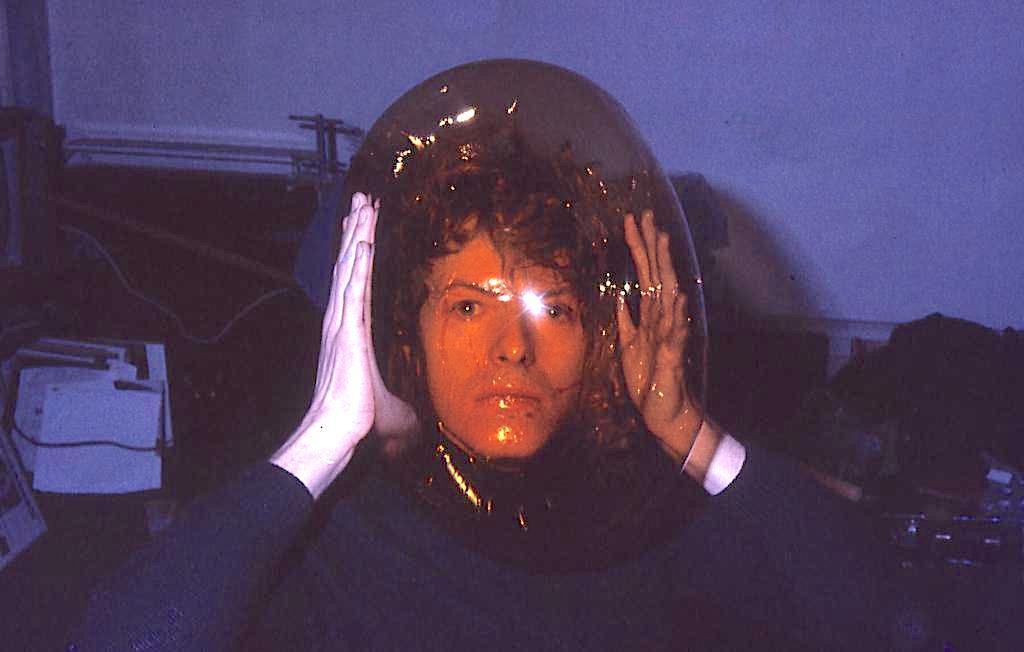David Bowie: Finding Fame, BBC Two review - the most touching instalment of Francis Whately's trilogy | reviews, news & interviews
David Bowie: Finding Fame, BBC Two review - the most touching instalment of Francis Whately's trilogy
David Bowie: Finding Fame, BBC Two review - the most touching instalment of Francis Whately's trilogy
Bowie’s long and slow climb to the top gets the documentary it deserves

Even the most ardent Bowie fan might dismissively sum up their idol's pre-fame years with just these three words: The Laughing Gnome.
But he needn't have worried. The Bowie he uncovered turned out to be just as compulsive in his greed for creating identities, just as keen to move on from one musical style to the next, and just as difficult to pin down as a flesh and blood human being as any of the man’s later incarnations.
 Actually no, scrap that last point. Whately arguably does get closer to who the flesh and blood David Jones really was than anyone has previously, largely thanks to securing interviews with an elusive cousin and a just as elusive first love. These two charming women, speaking to camera about Bowie for the first time, gave us a glimpse of the boy and the young man as a playful but deeply insecure individual motivated by an overriding need for fame and escape from his oppressive suburban home (pictured above, David Jones circa 1965).
Actually no, scrap that last point. Whately arguably does get closer to who the flesh and blood David Jones really was than anyone has previously, largely thanks to securing interviews with an elusive cousin and a just as elusive first love. These two charming women, speaking to camera about Bowie for the first time, gave us a glimpse of the boy and the young man as a playful but deeply insecure individual motivated by an overriding need for fame and escape from his oppressive suburban home (pictured above, David Jones circa 1965).
Cousin Kristina Amadeus recalls young Master Jones regularly amusing her by donning a flowerpot to mimic The Flower Pot Men (a popular children’s TV series at the time). And ballet dancer and girlfriend Hermione Farthingale rather telling describes the man she fell in love with within five minutes of meeting him as looking about eight years old: "I had to keep reminding myself he was actually twenty-one." She enigmatically concludes, "But he wasn’t lost, he just wasn’t found either."
But what of the music? Well, seeing Carlos Alomar play the riff from “The Laughing Gnome” was a laugh. But such fripperies aside, we were guided through DB’s pre-fame period – 11 years and nine separate bands – by a whole host of reliable witnesses. The documentary goes right up until Ziggy descended from the stars to save both us and David himself. Or as producer Tony Visconti so succinctly puts it: "He was the first rock star to take on a different identity. He was Ziggy Stardust by David Bowie." Friends, artists and musicians – including Woody Woodmansey, Rick Wakeman, Mike Vernon and Lindsey Kemp – speak affectionately of The Man Who Wanted the World but hadn’t yet quite worked out how to get it (pictured below, Bowie in a bubble, photographed by Tony Visconti).
 Yes, there are a couple of curious omissions. His 1969 landlady and lover Mary Finnigan could have been invited to reminisce about the Beckenham Arts Lab period (maybe she was, maybe she declined). And surely someone could have been found to talk about Bowie’s decidedly uncomfortable first meeting with Warhol (I recall Bowie at some juncture shaping it into an amusingly self-effacing anecdote which must be somewhere in the archives). But such trainspotter-ish quibbles aside, Whately should be extremely pleased with the picture he has managed to assemble from a jigsaw puzzle with at least half the pieces missing.
Yes, there are a couple of curious omissions. His 1969 landlady and lover Mary Finnigan could have been invited to reminisce about the Beckenham Arts Lab period (maybe she was, maybe she declined). And surely someone could have been found to talk about Bowie’s decidedly uncomfortable first meeting with Warhol (I recall Bowie at some juncture shaping it into an amusingly self-effacing anecdote which must be somewhere in the archives). But such trainspotter-ish quibbles aside, Whately should be extremely pleased with the picture he has managed to assemble from a jigsaw puzzle with at least half the pieces missing.
Even an expected dearth of film footage from 1964 to 1970 didn’t present any problems in the end. Whately simply keeps the screen busy with quick edits, juddering onscreen text, the layering of multiple images and various other visual devices, sometimes even going as far as to use a more "distressed" version of a clip (the 1973 Russell Harty interview for instance) to make it sit better texturally with the surrounding Super 8 footage and faded photographs. The end result is a hypnotic, multilayered work that’s never self-indulgent and always completely engaging. David Bowie: Finding Fame could stand alone as a perfect introduction to the thin white enigma. In fact it may even be the best of this admirable trilogy. It’s certainly the most touching.
rating
Explore topics
Share this article
Add comment
The future of Arts Journalism
You can stop theartsdesk.com closing!
We urgently need financing to survive. Our fundraising drive has thus far raised £49,000 but we need to reach £100,000 or we will be forced to close. Please contribute here: https://gofund.me/c3f6033d
And if you can forward this information to anyone who might assist, we’d be grateful.

Subscribe to theartsdesk.com
Thank you for continuing to read our work on theartsdesk.com. For unlimited access to every article in its entirety, including our archive of more than 15,000 pieces, we're asking for £5 per month or £40 per year. We feel it's a very good deal, and hope you do too.
To take a subscription now simply click here.
And if you're looking for that extra gift for a friend or family member, why not treat them to a theartsdesk.com gift subscription?
more TV
 The Count of Monte Cristo, U&Drama review - silly telly for the silly season
Umpteenth incarnation of the Alexandre Dumas novel is no better than it should be
The Count of Monte Cristo, U&Drama review - silly telly for the silly season
Umpteenth incarnation of the Alexandre Dumas novel is no better than it should be
 The Narrow Road to the Deep North, BBC One review - love, death and hell on the Burma railway
Richard Flanagan's prize-winning novel becomes a gruelling TV series
The Narrow Road to the Deep North, BBC One review - love, death and hell on the Burma railway
Richard Flanagan's prize-winning novel becomes a gruelling TV series
 The Waterfront, Netflix review - fish, drugs and rock'n'roll
Kevin Williamson's Carolinas crime saga makes addictive viewing
The Waterfront, Netflix review - fish, drugs and rock'n'roll
Kevin Williamson's Carolinas crime saga makes addictive viewing
 theartsdesk Q&A: writer and actor Mark Gatiss on 'Bookish'
The multi-talented performer ponders storytelling, crime and retiring to run a bookshop
theartsdesk Q&A: writer and actor Mark Gatiss on 'Bookish'
The multi-talented performer ponders storytelling, crime and retiring to run a bookshop
 Ballard, Prime Video review - there's something rotten in the LAPD
Persuasive dramatisation of Michael Connelly's female detective
Ballard, Prime Video review - there's something rotten in the LAPD
Persuasive dramatisation of Michael Connelly's female detective
 Bookish, U&Alibi review - sleuthing and skulduggery in a bomb-battered London
Mark Gatiss's crime drama mixes period atmosphere with crafty clues
Bookish, U&Alibi review - sleuthing and skulduggery in a bomb-battered London
Mark Gatiss's crime drama mixes period atmosphere with crafty clues
 Too Much, Netflix - a romcom that's oversexed, and over here
Lena Dunham's new series presents an England it's often hard to recognise
Too Much, Netflix - a romcom that's oversexed, and over here
Lena Dunham's new series presents an England it's often hard to recognise
 Insomnia, Channel 5 review - a chronicle of deaths foretold
Sarah Pinborough's psychological thriller is cluttered but compelling
Insomnia, Channel 5 review - a chronicle of deaths foretold
Sarah Pinborough's psychological thriller is cluttered but compelling
 Live Aid at 40: When Rock'n'Roll Took on the World, BBC Two review - how Bob Geldof led pop's battle against Ethiopian famine
When wackily-dressed pop stars banded together to give a little help to the helpless
Live Aid at 40: When Rock'n'Roll Took on the World, BBC Two review - how Bob Geldof led pop's battle against Ethiopian famine
When wackily-dressed pop stars banded together to give a little help to the helpless
 Hill, Sky Documentaries review - how Damon Hill battled his demons
Alex Holmes's film is both documentary and psychological portrait
Hill, Sky Documentaries review - how Damon Hill battled his demons
Alex Holmes's film is both documentary and psychological portrait
 Outrageous, U&Drama review - skilfully-executed depiction of the notorious Mitford sisters
A crack cast, clever script and smart direction serve this story well
Outrageous, U&Drama review - skilfully-executed depiction of the notorious Mitford sisters
A crack cast, clever script and smart direction serve this story well
 Prost, BBC 4 review - life and times of the driver they called 'The Professor'
Alain Prost liked being world champion so much he did it four times
Prost, BBC 4 review - life and times of the driver they called 'The Professor'
Alain Prost liked being world champion so much he did it four times

Comments
As a life long Bowie fan,